Cambodia plans to eliminate malaria by 2025. A network of volunteers in hard-to-reach communities is key to making it happen.
Chhean Savry wades across a stream and onto a well-worn path through the dense forest at the edge of the Cardamom mountains, a malaria hotspot in Cambodia’s Kampong Chhnang province.
Savry carries a backpack full of malaria test kits and medicine, ready to offer testing, advice, and treatment if needed, to the forest workers who live in the area. Her first stop today is at the home of Nheb Sarou and his family.
Sarou is at home after several days in the nearby hills, working during the day and sleeping in the open at night. A friend he had been working with just tested positive for malaria, so Sarou is glad to take Savry up on the offer to test the whole family. Sarou’s wife is also grateful, as she wasn’t sure how they would have afforded to travel with their two children to the health center, several hours’ journey away. Luckily, everyone tests negative, and Savry is soon back on the path, looking for the next person.
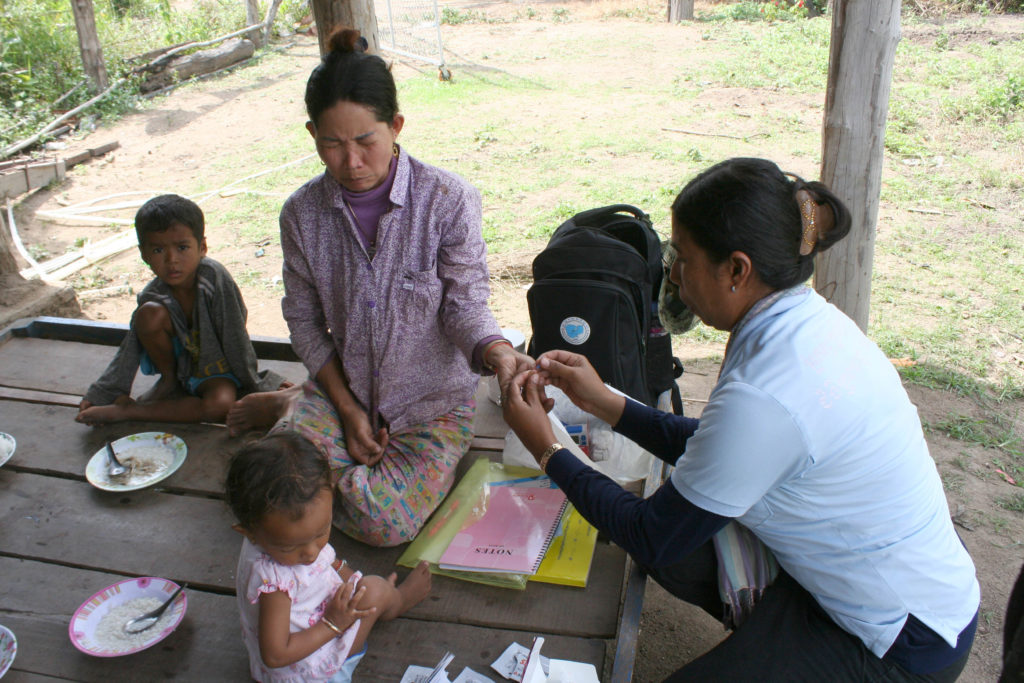
Savry tests Sarou’s wife for malaria.
Savry is a village malaria worker (VMW) – a volunteer who is trained to diagnose and treat uncomplicated malaria cases in her community. She performs rapid diagnostic tests on any villager suspected of having malaria, provides anti-malarials to those who test positive, and refers severe cases to health facilities. Today’s outreach is aimed at reaching Cambodians who live in higher endemic areas, often just outside the communities that volunteers serve.
In Cambodia, the VMW network is a critical link between the public health system and the community. Designed and officially launched in 2004 by the National Center for Parasitology, Entomology, and Malaria (CNM), the network was established to address the needs of those living in malaria hotspots and to prevent the threat of artemisinin-resistant malaria. Located more than 25 miles from the nearest health center, volunteers open their homes to provide malaria testing and treatment, and advice on how to avoid the disease.
Even in relatively low burden areas, VMWs help ensure that communities remain malaria-free. They receive a small, but essential stipend to support their travel to monthly meetings and restock their supplies.
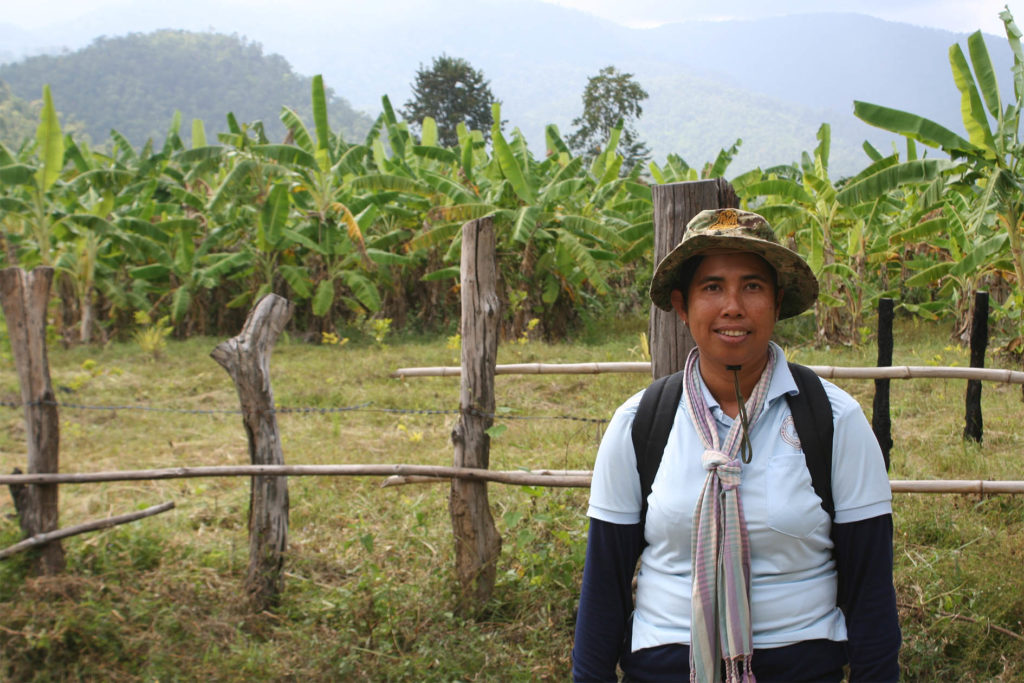
Savry pauses after testing several forest workers and a family.
VMWs have been steadily improving the coverage of malaria services for years, but in 2016 the network stalled and almost disappeared due to changes in grant disbursement policies that impacted the ability of VMWs to receive payments. Most of the volunteers stopped testing and treating cases once payments stopped, as they could no longer afford the monthly trip to their health center to restock. The result was a 90 percent decline in testing in the affected villages. By early 2018 there was a marked increase in malaria cases across the country.
In order to re-activate the network, CNM, with the support of CHAI, conducted a risk assessment to inform the distribution of 2,381 VMWs. CHAI then worked with CNM and UNOPS to get VMWs paid. We mapped electronic payment providers, negotiated contracts, and piloted the final system. The VMW program is now fully re-established nationwide with CHAI providing support to CNM in four provinces. To reverse the increase in malaria cases, CNM developed two strategies.
Improve core case management
Volunteers report the number of malaria tests they conduct and cases they identify in real time through a mobile phone app that updates directly into CNM’s Malaria Information System (MIS). Every month, VMWs attend a meeting at their nearest health center to review data, set testing targets for next month, and replenish antimalarial supplies.
Since 2019, the VMW program has conducted 100 percent of scheduled meetings, with a 99 percent volunteer attendance rate. Eighty-six percent of those volunteers are paid on the same day of the meeting through electronic payments.
VMWs have also expanded their arsenal of anti-malarials. While the standard malaria therapy, an artemisinin combination therapy (ACT) drug, is effective for curing the blood-stage malaria parasite in the body, the drug primaquine targets other stages of the parasite. The WHO recommends the addition of primaquine as a single low dose to reduce transmission for Plasmodium falciparum (P.f) malaria, and as a 14-day regimen to cure patients with Plasmodium vivax (P.v) malaria, which can cause multiple relapses from a single infection.
Based on this evidence, VMWs also began providing primaquine in addition to ACTs nationwide as a single low dose to patients with P.f and mixed P.f/P.v malaria in 2018. VMWs in four pilot provinces now refer patients with P.v malaria to the health center for eligibility testing for 14 days radical cure with primaquine, which will expand nationwide in 2020.
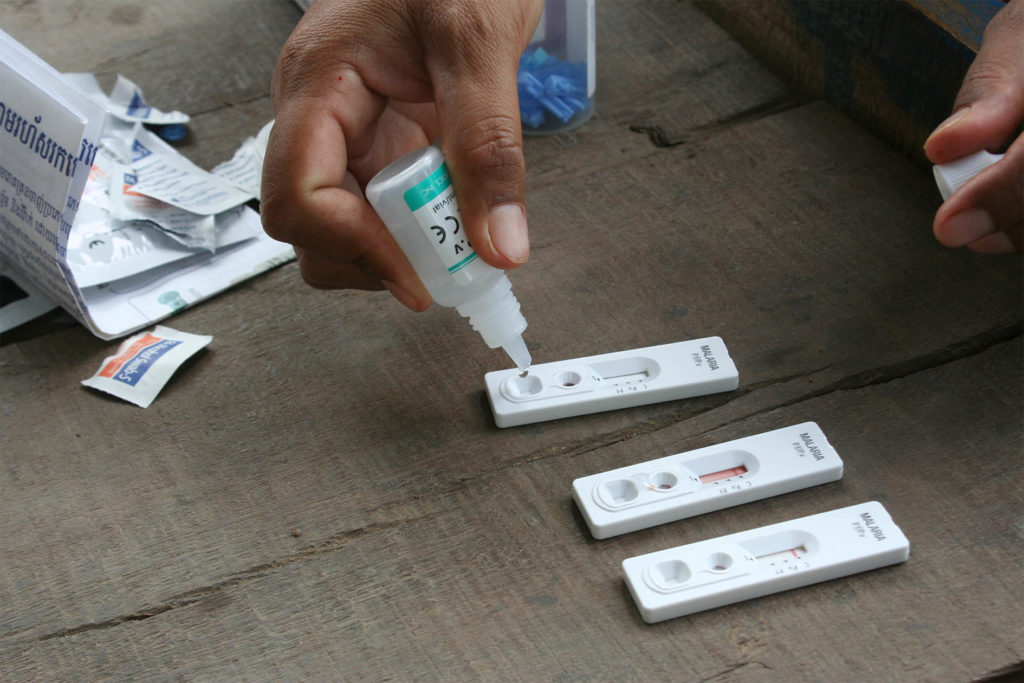
Savry prepares the malaria test strips after collecting samples from Sarou’s family.
Intensify approaches in the highest burden areas
Eighty percent of all malaria cases in the country come from just 30 health centers which are located near forests and serve mobile migrant populations, according to the CNM. Since October 2018, CNM and partners have implemented an Intensification Plan to target these malaria hotspots.
The plan has improved the supply chain to remote areas and mobilized malaria workers who provide 24-hour access to diagnosis and treatment, as well as single low dose primaquine, and health communications on how to lower the risk of contracting malaria.
The plan specifically targets forest-goers, like Sarou, who live, work, and travel near forests and who are at higher risk for the disease. Forest goers receive forest-packs which include long-lasting insecticide treated hammock nets and mosquito repellent, so that they no longer have to sleep in the open when they are working.
CNM staff analyze the program data monthly with partners and provincial, district, and health center staff who directly supervise the activities.
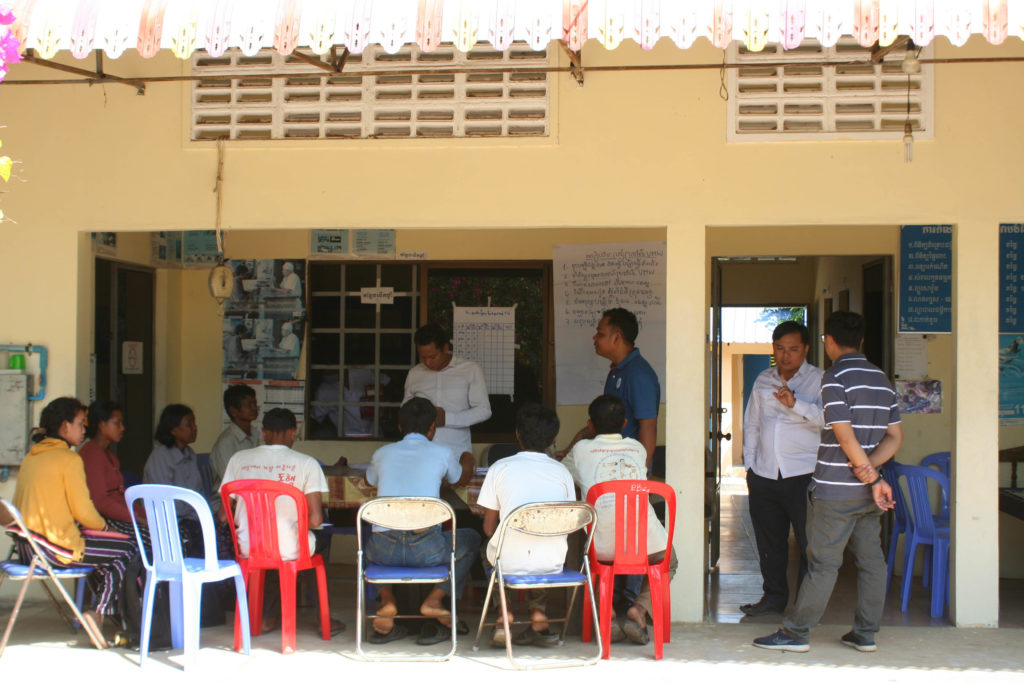
Volunteer malaria workers attend their monthly meeting.
VMWs’ contribution towards Cambodia’s malaria elimination efforts
VMWs are not a homogeneous group and vary widely in age, gender, and education, but they do share one thing in common – a desire to serve their communities. For example, Pel Sarith has been a VMW since 2016. At a recent VMW monthly meeting he said that he contributes his time because he wants to improve the day to day lives of his fellow villagers. He sees health as a way to lift his community out of poverty.
Dr. Po Ly, the CNM Deputy Chief of Technical Bureau and CNM Head of the VMW unit, says that VMWs are on the frontline and are the back-bone in the fight to end malaria. They must be supported and appreciated for their commitment to the health and well-being of their communities.
Since relaunching the volunteer network, malaria cases have gone down as volunteers ramp up testing. VMW testing increased by 214 percent from 2018 to 2019, with VMW tests making up 72 percent of all tests nationally (MIS 2019).
In malaria hotspots, the Intensification Plan has also been successful. Between October 2019 and December 2020, malaria cases in the country dropped by 49 percent, with a 72 percent decrease in P.f. cases and a 43 percent drop in P.v. cases. That is in part thanks to the increased testing as well as the distribution of 4,650 forest packs and 28,486 insecticide-treated hammocks.
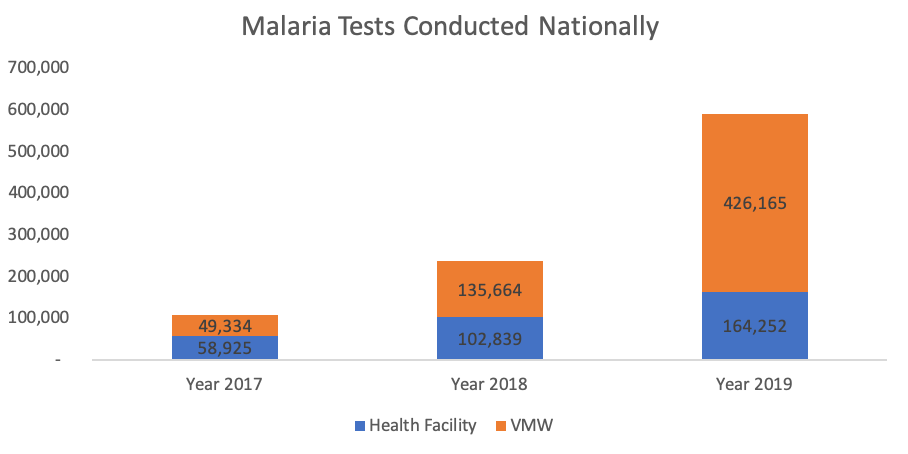
New challenges
The VMW network, along with the rest of the health system in Cambodia, is learning to adapt to the reality of COVID-19.
Currently, VMWs are continuing their work, with supported guidance on fever patient management and social distancing incorporated into the testing procedures. They are practicing social distancing through limiting monthly meetings to only picking up supplies and submitting critical reports rather than gathering in groups. VMWs will continue to be on the front lines, delivering services so that their communities don’t see a resurgence in malaria due to the necessary shift in attention to COVID-19.
This network of volunteers has an important role to play as Cambodia works toward its goal of eliminating malaria from the country by 2025.





